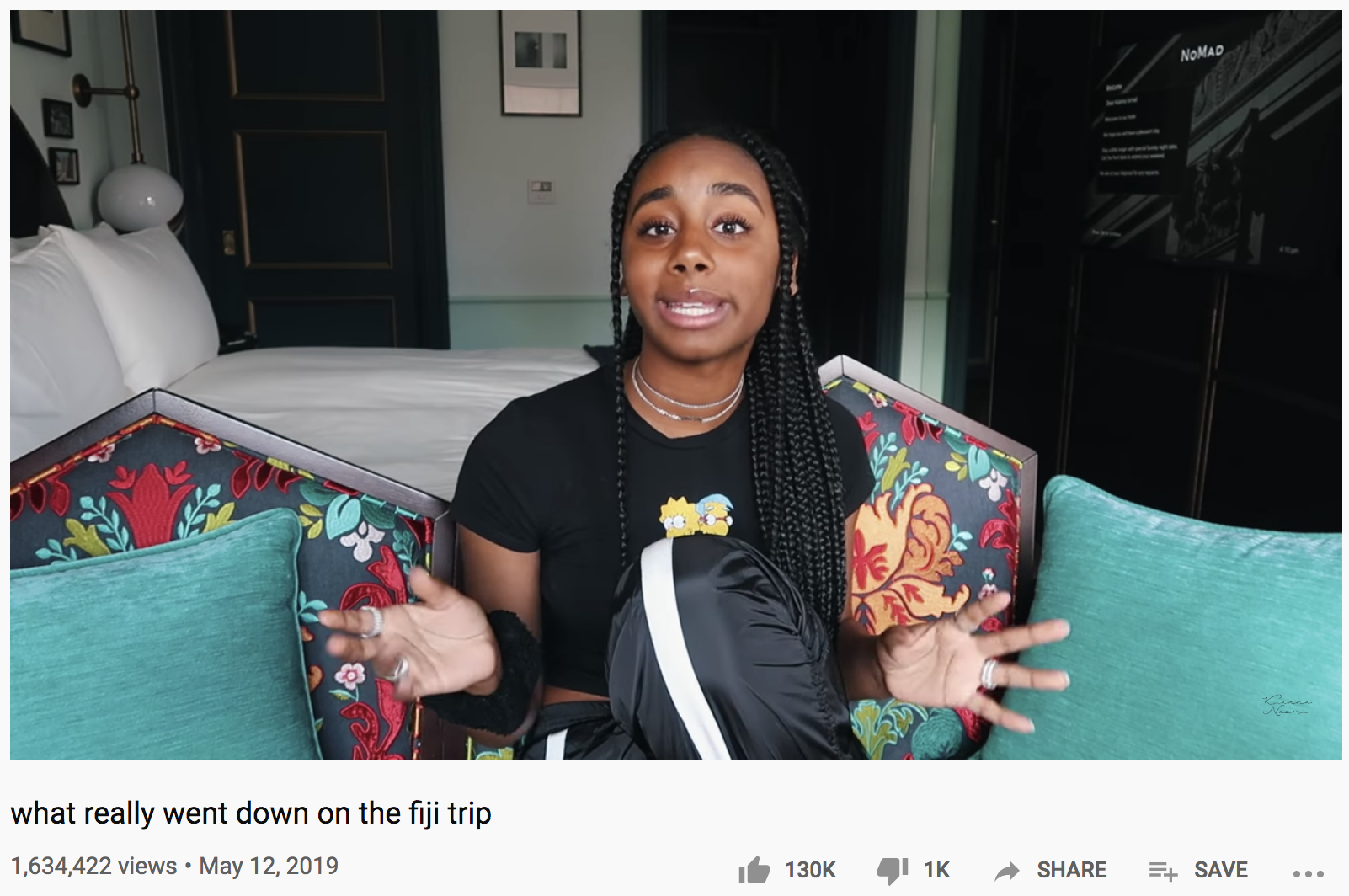This is Please Like Me, BuzzFeed News’ newsletter about how influencers are battling for your attention. You can sign up here.
Influencers of color say they are treated differently on brand trips.

Lisette, aka Luhhsetty, is a 23-year-old beauty and lifestyle YouTuber with over 2.5 million subscribers. She shares many facets of her life, from her daily makeup routines to her personal relationships.
However, she told me she has been reticent about sharing one reality of her life: the experiences she has on brand trips as a woman of color.
“I wanted to make this video for a while now, but I was just afraid,” she told me about filming a vlog earlier this month detailing her “horror stories.” “I was nervous this video could potentially be read the wrong way...coming across ungrateful or spoiled.”
Lisette is of mixed race, half black and half white. She feels that her professional experiences have been different than that of her white colleagues.
In her nearly 40-minute video, she describes various times on work trips when she and a select few others were given a different itinerary (or none at all). She said there were a few chosen “stars” (who were white) of the trips that most photo shoots were built around, while shoots for her and others felt strewn together; and at one point, the brand required all talent to show up with straightened hair (she has naturally curly hair).
And Lisette is not the only one now airing it out.
Over the past year, more and more of these vlogs have been cropping up. In May, I spoke to a number of nonwhite influencers who had been asked by fashion brand Dote to go on a Coachella trip. The nonwhite influencers told me that when they arrived for the trip, they were “separated” and assigned to a different wing of the house from white influencers. One of them, 18-year-old Daniella Perkins, said she and others were “excluded” from activities and photo shoots. (Dote, which first denied these accounts, eventually came out with an Instagram press release saying it pledged to “improve diversity at Dote.”)
These women inspired YouTuber Kianna Naomi to speak up as well. In a vlog that now has over 1.3 million views, Kianna describes her experiences during a work trip to Fiji with an unnamed company. She says she felt “no one wanted to talk to [her]” and “no one wanted to take pictures [with her].”

The feelings of discomfort combined with fears of “coming across [as] ungrateful” are expressed in a lot of these videos. Social media–famous young women of color say they are experiencing a confusing reality. They have built successful followings, so successful enough that they’re being invited on fancy trips and are being paid by companies to sell their products. But they come away feeling undervalued and disappointed.
Despite their bad experiences, these women still feel they should be grateful. Many of them are grateful — and usually are quick to say so in the intros of their vlogs — for the opportunity. They are still worried that talking about what appears to be very consistent inequalities in their lived experiences makes them appear thankless for the entire opportunity.
Is vlogging a very privileged career? Yes. Oh god, yes. (So is writing an influencer newsletter, BTW.) But that doesn’t mean there aren’t very real inequities for people in these pampered spaces. It also doesn’t mean that even ambiguously structured, fast-fashion companies shouldn’t be held responsible for these inequalities. Especially when women of color influencers are being used for diversity optics on their company Instagram feeds.
It’s clear these women are right: Young women of color are being treated differently. “We definitely need more brands to be aware,” said Lisette.
For companies, it’s not enough to just invite them on big, ritzy trips (performing their awareness of diversity for appearances). They need to be mindful of the day-to-day, behind-the-scenes, not-made-for-Instagram experiences of their talent (applying the awareness of diversity because...they care...right?).
Perhaps brands should feel grateful their clients are still coming on these trips.
Quickly, if ya curious: VSCO by the consumer numbers
A PR company for an e-commerce research company sent me some stats about the PURCHASING POWER OF THE VSCO GIRL.
VSCO, the photo-editing app, does not take credit for creating the fashion and lifestyle trend. But its mainstream influence is fast, potent, and powerful. So perhaps it should just take credit.
Bloomreach looked at the increase in sales of VSCO girl-related products over the past 12 months. Here’s a snapshot of how money-making the VSCO trend has become. (Of course, these also could have been purchased outside of the trend.)

The time I am spending trying to think of how to rebrand products to be cool for teens just increased by 550%.
Until next time,
Tanya
P.S. If you like this newsletter, help keep our reporting free for all. Support BuzzFeed News by becoming a member here. (Monthly memberships are available worldwide.)
